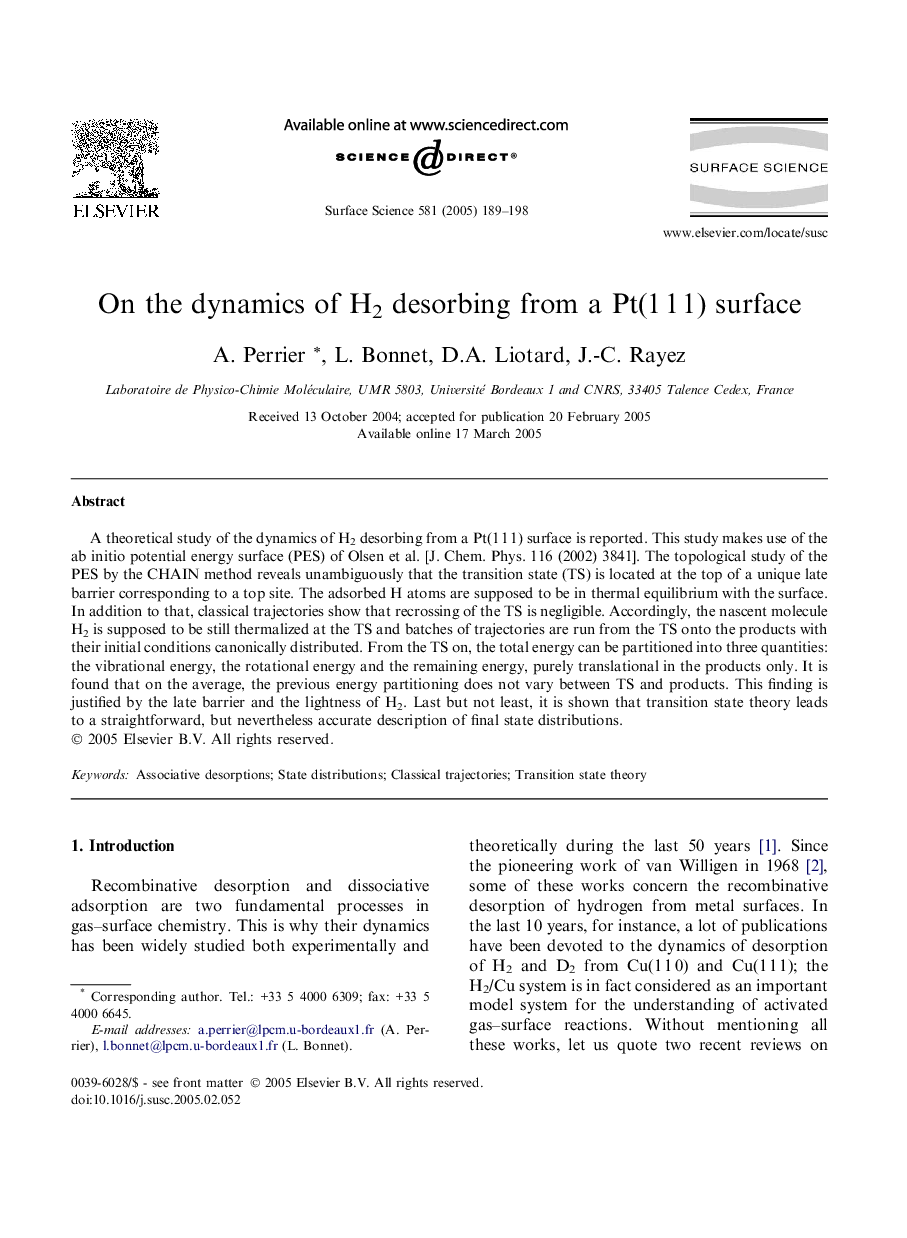| Article ID | Journal | Published Year | Pages | File Type |
|---|---|---|---|---|
| 9594940 | Surface Science | 2005 | 10 Pages |
Abstract
A theoretical study of the dynamics of H2 desorbing from a Pt(1Â 1Â 1) surface is reported. This study makes use of the ab initio potential energy surface (PES) of Olsen et al. [J. Chem. Phys. 116 (2002) 3841]. The topological study of the PES by the CHAIN method reveals unambiguously that the transition state (TS) is located at the top of a unique late barrier corresponding to a top site. The adsorbed H atoms are supposed to be in thermal equilibrium with the surface. In addition to that, classical trajectories show that recrossing of the TS is negligible. Accordingly, the nascent molecule H2 is supposed to be still thermalized at the TS and batches of trajectories are run from the TS onto the products with their initial conditions canonically distributed. From the TS on, the total energy can be partitioned into three quantities: the vibrational energy, the rotational energy and the remaining energy, purely translational in the products only. It is found that on the average, the previous energy partitioning does not vary between TS and products. This finding is justified by the late barrier and the lightness of H2. Last but not least, it is shown that transition state theory leads to a straightforward, but nevertheless accurate description of final state distributions.
Related Topics
Physical Sciences and Engineering
Chemistry
Physical and Theoretical Chemistry
Authors
A. Perrier, L. Bonnet, D.A. Liotard, J.-C. Rayez,
